Partners
CrossVista Technology Partners
At the heart of every great solution is a strong partnership. By working closely with industry leaders, we align our goals, share expertise, and drive mutual success. Partnerships not only fuel innovation but ensure our customers benefit from integrated, high-impact solutions that deliver real results — faster, smarter, and at scale.
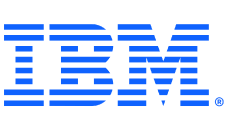
CrossVista is an IBM Silver Build Partner.
BM is a global technology and innovation company headquartered in Armonk, NY. It is the largest technology and consulting employer in the world, with more than 375,000 employees serving clients in 170 countries. IBM offers a wide range of technology and consulting services; a broad portfolio of middleware for collaboration, predictive analytics, software development and systems management; and the world’s most advanced servers and supercomputers. Utilizing its business consulting, technology and R&D expertise, IBM helps clients become “smarter” as the planet becomes more digitally interconnected. IBM invests more than $6 billion a year in R&D, and just completed its 22nd year of patent leadership. IBM Research has received recognition beyond any commercial technology research organization and is home to 5 Nobel Laureates, 9 US National Medals of Technology, 5 US National Medals of Science, 6 Turing Awards, and 10 Inductees in US Inventors Hall of Fame. The company was behind the inventions of the PC; SABRE travel reservation system; UPC codes, Watson, the Jeopardy!-playing computing system, and much more. Learn more at www.ibm.com.

CrossVista is an Oracle Build Partner
For more than four decades, Oracle has delivered innovations that have helped build entire industries. Oracle’s innovations include the world’s first autonomous database, the industry’s broadest and deepest suite of AI-powered cloud applications, the world’s largest EHR implementation (serving more than 9.5 million beneficiaries spanning the United States, Europe, and the Asia Pacific region), 5 million registered members of Oracle’s customer and developer communities, and 469 independent user communities in 97 countries representing more than 1 million member communities. Learn more at www.oracle.com.

CrossVista is a Google Cloud Build Partner.
Google Cloud is a leading cloud vendor that offers a suite of computing services to do everything from data management and applications to delivering web and video over the web to AI and machine learning tools. Customers are able to access computer resources housed in Google’s data centers around the world for free or on a pay-per-use basis. Learn more at https://cloud.google.com/
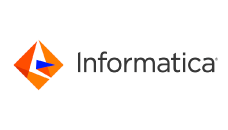
CrossVista is an Informatica Technology Partner.
Informatica is 100 percent focused on data because the world runs on data. Organizations need business solutions around data for the cloud, big data, real-time and streaming. Informatica is the world’s No. 1 provider of data management solutions, in the cloud, on-premise or in a hybrid environment. More than 7,000 organizations around the world turn to Informatica for data solutions that power their businesses. For more information, visit www.informatica.com.
CrossVista Consulting Partners

CerePro Consulting GmbH is a CrossVista consulting partner.
As experienced consultants for leading companies across multiple industries, the founders of CerePro no longer wanted to be satisfied with the limitations and self-interest of large organizations that offer customers great cost but little value. Therefore, we have decided to spend more time working towards the development of intelligent, reasonable and sustainable solutions for our customers. We do our job with great independence, concentration and goal orientation. But above all we are team players who work in partnership for the common project success.
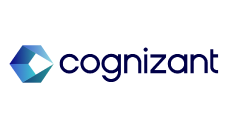
Cognizant is a CrossVista consulting partner.
Cognizant is a leading provider of information technology, consulting, and business process outsourcing services. Recognized by Fortune Magazine as one of the World’s Most Admired Companies, Cognizant’s single-minded passion is to dedicate their global technology and innovation know-how, industry expertise, and worldwide resources to working together with clients to make their businesses stronger. With 50 global delivery centers and approximately 63,700 employees as of March 31, 2009, Cognizant combines a unique onsite/offshore delivery model infused by a distinct culture of customer satisfaction. A member of the NASDAQ-100 Index and S&P 500 Index, Cognizant is a Forbes Global 2000 company and a member of the Fortune 1000 and is ranked among the top information technology companies in BusinessWeek’s Hot Growth and Top 50 Performers listings.
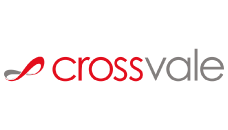
CrossVale is a CrossVista consulting partner.
Crossvale was founded in August 2001. Our mission was to build a professional services firm that offered more than just technical excellence. We wanted to deliver business value in a world where technology is essential but intimidatingly misunderstood, and where making development a commodity doesn’t deliver the goods. And especially, we wanted to do so as an ethically-driven, honorable partner to both our clients and our employees. At Crossvale, our focus is on results — our customers’ successes. Since day one, we have remained steadfast to this objective, as we recognize that our success depends on the successes of our clients. Mutually assured success has served us well, providing clear direction to our team and earning the trust of numerous clients.
Our corporate culture is shaped by three mantras:
- Effort does not matter. Results do.
- Respect requires candor, even when uncomfortable.
- Never mess with people’s money (neither our employees’ nor our clients’)
Crossvale provides technological expertise, solutions and platforms to fix business challenges related to, and affected by, IT infrastructure and its associated processes.
Our competencies range from software integration to enterprise and solution architecture. Our track record with satisfied clients speaks for itself and no matter what size the project or customer, our core values are always applied to provide quality service and results that are unsurpassed.
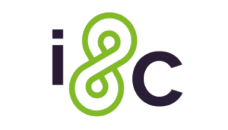
Integr8 Consulting (I8C) is a CrossVista consulting partner.
The area of business integration is a fast growing market, driven by the globalization of business, mergers and acquisitions, and the fundamental business requirements to reach out and maintain new customers, partners and suppliers. In this rather new and still maturing market, technology and standards are changing faster than in other areas. Integra8 Consulting’s (I8C’s) mission is for our customers to get the most out of their integration investments, by offering them the best skills and up-to-date knowledge possible, in the state-of-the-art technologies that are used in this area.
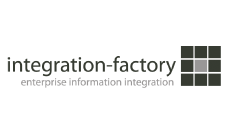
Integration Factory is a CrossVista consulting partner.
integration-factory is a leading consulting firm for data integration and business intelligence solutions. Founded in 2004 , integration-factory is characterized by dynamic teams of consultants from who bring many years of project experience, flexibility in thinking and a high degree of motivation, and one of the most sought-after expert for the integration of enterprise data.
With currently 46 employees renowned customers in the financial and automotive industry for years successfully advised and supported. Among our customers, with whom we have long-standing partnerships, include the German Stock Exchange Group, Daimler AG, German Bank AG, DZ BANK AG, European Energy Exchange AG.
Our success prove international awards, such as the TDWI Best Practice and Leadership Award and Informatica Partner of the Year 2013.

Levio is a CrossVista consulting partner.
Our purpose is to shape our clients’ success. We work closely with each client towards the long-term goal of transforming vision into value.
Our team focuses its energy and expertise on driving transformations that adapt new technologies to our client’s evolving business realities.
As a true partner, we have skin in the game and we stay in the game, until the job is done and our client is satisfied.
Discover the pillars of our approach to delivering tailored solutions that create real value for our clients.

Princeton Blue is a CrossVista consulting partner.
Princeton Blue is a leading service provider of Service Oriented Architecture (SOA) based Enterprise Application (EAI) Integration, Business-to-Business (B2B) Integration, and Business Process Management solutions. Princeton Blue brings many years of integration expertise that can help automate the manual communication between various organization silos within an enterprise and across the trading partners of the enterprise. Princeton Blue’s senior architects and thought leadership team brings tremendous knowledge and real-world experience that ensures the incorporation of best practices thus minimizing project risk and guaranteeing timely completion of the clients’ strategic initiatives.
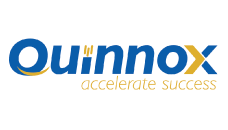
Quinnox is a CrossVista consulting partner.
Quinnox is an SEI-CMM Level 5, ISO 9001:2000 certified IT services and solutions provider headquartered in the US, with offices in UK, Japan, Germany and India. We have 4 state of the art development centers in India that leverage a cost-effective delivery mechanism and a wide talent pool of 1200+ employees catering to a client base consisting of Fortune listed companies.
Quinnox offers the full spectrum of IT lifecycle solutions, right from development to support services, including packaged implementations and product development services. We are a technology-focused company with wide experience in the Banking and Financial Services, Retail and Manufacturing industries.
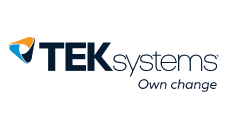
TekSystems is a CrossVista consulting partner.
TEKsystems designs, develops, markets and supports enterprise applications and solutions to meet the critical requirements of businesses. We are geared towards providing focused services to organizations, whose competitive edge depends in part on the use of IT and for whom the opportunity to reduce software development cost can enhance their capabilities to compete in the global market place. Our solutions comprise a broad range of advanced products and services designed to enable companies run the business, deploy products and business intelligence tools on a global basis.
We deliver on time and consider both strategy and execution to be of high significance. We are striving to transform ourselves from a solution provider to a business facilitator. Our partnership programs are used to increase the functionality of our applications and enhance our services suite to support a customer end-to-end. We have partnered with leaders like Oracle Corporation, Software Ag, IBM, Microsoft Corporation, Teradata and SurfBI Mobile.
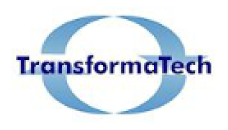
TransformaTech is a CrossVista consulting partner.
TransformaTech, Inc. was built on years of experience specifically helping clients improve their business using IT best practices in Project Management, Virtualization, Systems Integration, and Performance Engineering.
Our goal is to help our clients by using leading technology, methodologies, and best practices to improve IT and Business performance.
We pride ourselves on “doing whatever it takes” to meet our clients expectations through expert knowledge, dedication, commitment, and hard work.
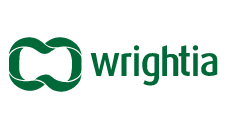
Wrightia is a CrossVista consulting partner.
Wrightia (www.wrightia.com) is a specialized integration consultancy with an exclusive focus on consulting around webMethods and Oracle Fusion projects. Given this specific focus, it is no surprise that Wrightia has some of the best webMethods talent available in the market today. Their expertise includes basic integration, business process management solutions, SOA Governance, and more. In addition to providing onsite consulting services, they also have the infrastructure in place to provide “near sourcing” to their customers in Europe via their facilities in Portugal.
- Enhancing the automation and integration of the extended enterprise (processes, applications, data).
- Building future proof solutions faster, cheaper and better in order to help our clients achieve their business objectives.
- Being a flexible and trusted business partner to our clients.
We encourage and value team work, dedication to the job, integrity and excellence. We view our consultants as an extension of our clients’ own resources and we derive motivation and pride from our clients’ success.
